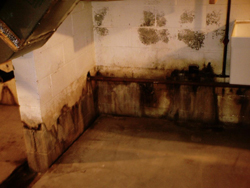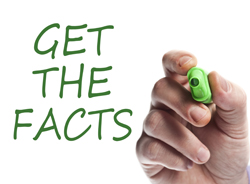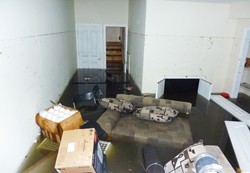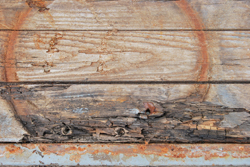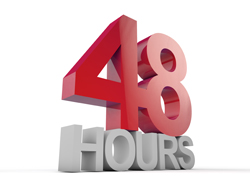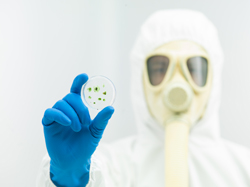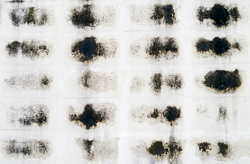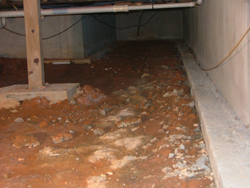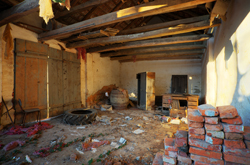
by Eric Brown | Aug 21, 2015 | Health, Indoor Air Quality, Mold Facts, Mold Information, Mold Inspection, Mold Remediation, Mold Removal, Mold Removal Cost, Questions and Answers
How Much Does Mold Remediation Cost?
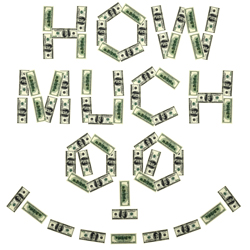
How Much Does Mold Remediation Cost
Finding mold in your home is disconcerting because you are concerned about the potential health impact on you and your family.
The purpose of this article is to answer the following three questions for Atlanta residents that need mold removal:
1. What steps does a mold inspector take to determine if a mold problem exists?
2. What questions should I ask to ensure that I am working with a reputable mold removal professional?
3. What criteria does the professional use to determine the final mold removal cost?
What steps does a mold inspector take to determine if a mold problem exists?
The three steps a mold inspector will take to determine if a mold problem exists include the following:
Step #1: Identify The Root Cause of the Problem
The root cause of mold is moisture. With this in mind, during the inspection process, the inspector will ask many questions to try to learn more about past and existent moisture problems. You will be asked about past moisture problems that could be caused by flooding, leaks, excessive humidity, etc. The inspector will also check the levels of humidity and moisture levels using moisture detection equipment.
Once this step is complete and if the inspector is positive that there are moisture issues, the next step is to…
Step #2: Find Out If Moisture Problems Are Still Present
The mission of all mold inspectors is to find the moisture problems and then determine what needs to be done for this to be fixed. Indeed, there is no point in removing mold or addressing a mold concern unless the underlying cause is first fixed. For instance, if you have a leaky roof, pipes, seepage, and/or high humidity levels, these problems need to be fixed first because moisture is what mold needs to thrive.
Determining the source of moisture can be a challenge if the home has mold, but no history of flooding and no clear evidence of moisture issues like visual water stains. In cases like this and if it is clear that there is mold, the inspector may recommend that a specialist in Thermal Imaging be consulted to determine if there are hidden leaks. Thermal imaging helps identify hot and cold spots that can pinpoint areas where there could be hidden leaks or moisture intrusion.
The final step a mold inspector must address is to…
Step #3: Determine The Type of Mold
The core purpose of this step is to find out what type of mold you have.
This can also be a challenge if there is no visual mold present but there is a mildewy or urine like smell indicating that there is mold somewhere, perhaps hidden behind walls. In instances like this, the mold inspector may recommend an air quality test to measure the spore count inside of the home and outside of the home.
If there are places where mold hides in your home, then tape or swab samples will be taken.
Once the samples are collected, they should be sent to a Third Party Lab to determine the type of mold present.
These results will be provided to you along with an explanation of the type of mold, spore count, and potential health consequences that the present mold species will have.
After your initial investment into the mold inspection and air quality tests (if applicable) and it is verified that you have a mold problem, then you need to determine which mold removal company you will work with.
What questions ensure I am working with a reputable mold removal professional?
If you search for Atlanta mold removal companies on Google, you will find many businesses that offer mold removal services. But who can you trust?
An on-going concern in our industry relates to the lack of licensing and regulation. Because of this, any contractor who wants to profit from mold removal can offer the service even if they lack experience and training. As a consumer, you need to be aware of this and the best defense is due diligence.
If you have a mold problem that needs to be remediated, then you should get estimates from a minimum of three qualified contractors, and check to see what their BBB rating is. In addition, qualify the contractor, by asking these questions:
1. Does the mold removal contractor offer a written contract/change order?
2. Does the mold removal contractor offer a remediation plan?
3. Does the mold removal contractor offer a post-remediation report?
4. Does the mold removal contractor provide recommendations of independent indoor environmental professionals that can provide you with a post-remediation verification report, to verify the success of the work?
5. Does the mold removal contractor have proof of insurance?
6. Does the mold removal contractor’s employees have training through recognized and reputable organizations?
7. Does the mold removal contractor set up containment to prevent cross contamination?
8. Does the mold removal contractor use negative air machines and air scrubbers to clean the air?
9. Does the mold removal contractor give you a list of referrals and their contact details?
10. Does the mold removal contractor use DOP (Dispersed Oil Particulate) tested equipment which is a process that tests the integrity of the HEPA (High Efficiency Particulate Air) filters used?
You should get YES answers to all of these questions and if you don’t, interview other contractors.
Another key question you need to ask relates to the guarantee a mold remediation contractor offers on their work. Are they willing to offer you a guarantee?
Once you have found three contractors that have passed your due diligence testing and you know that you are willing to hire one of them, then the next step is to request the following documents from each of them:
1. Itemized mold removal estimate.
2. Mold removal plan of action, also referred to as a scope of work.
3. An authorization to proceed (ATP), which is the service contract.
Itemized Mold Removal Estimate
The estimate details exactly what you are paying for. A professional estimate will outline what you are paying for and will usually provide you with pricing for the following: equipment; garbage removal; materials and consumables; mold removal labor; documentation; equipment decontamination; management charges; etc. This type of break down provides you with information that you can compare with other quotes you receive.
Be wary of estimates that provide no detail and just a dollar figure. This is a concern for two reasons. First, you do not know exactly what you are paying for. Second, it is difficult to compare simple quotes with detailed quotes, making it more difficult to make informed decisions.
Bottom line, don’t be afraid to ask for line by line details so that you know exactly what is involved in the mold removal cost.
Mold Removal Plan Of Action
The Scope of Work provides you with a detailed work plan of what exactly will be done to remove the mold and restore the fungal ecology of your home to healthy levels. Contractors unwilling to provide such a plan should be avoided. If you do not get a written plan, then how do you know if the work was done properly and effectively?
Authorization To Proceed
Thoroughly review the ATP before signing and allowing the work to begin so you are clear on the terms of the service.
What criteria does the professional use to determine the final mold removal cost?
Ultimately, the final removal cost estimate will be determined by three key criteria:
1. How much of the area is infected with mold?
2. What kind of materials are infected?
3. How easy is it to access the mold?
Answers to the above questions will enable the contractor to provide you with an estimate. Typical household mold removal projects will range from $2,000 to $6,000 depending on the answers to the questions above. It should be noted, however, that there is no set rule for mold removal cost because it tends to be situation and market specific. Because of this, the cost can range from a low of $500 up to $30,000, which is a significant variance.
Since there is no easy answer to the “Mold Removal Cost” question it is imperative that you, the consumer, invest time in due diligence, ask prospective contractors questions, check references, and thoroughly review the documentation that you receive.
There is no easy answer to this question because every situation is different and this is the reason we specifically advise that you compare quotes from at least three companies.
Most importantly, think long term and choose the company that you think will do the best job, even if their price is higher. Reputable mold remediation professionals may cost more, but ultimately, you get what you are paying for and the long term benefits of getting the job done right the first time will save you from future costs and headaches.
Mold B Gone offers a guarantee on our services. If you have a mold concern and have questions, please call us, (470) 545-4467, or send us an e-mail.
How Is #Mold Removal Cost Determined?: Have a mold concern, wondering what it will cost to remove? This article provides you with a detailed explanation of how mold removal cost is determined!
Posted by Mold-B-Gone Remediation, LLC on Friday, August 21, 2015

by Eric Brown | Aug 14, 2015 | Health, Mold Facts, Mold Information, Mold Inspection
What Happens During A Mold Inspection?

What Happens During A Mold Inspection?
Our previous article explained how you can determine if you have mold and what you should and should not do if you discover mold.
One of the key recommendations was to call a professional to do a thorough inspection.
The purpose of this article is to explain what the inspector does when they visit your home or business.
Mold Inspectors Have Two Key Goals
The primary goal of a mold inspector is to first determine what is causing the mold. That is, they want to figure out what the source of moisture is that is causing the mold.
The second goal is to determine the extent of contamination and what type of mold is present so that a proper removal and remediation plan can be put into place.
Like a detective looking for clues, during the mold inspection, the inspector will gather information about the property by taking four actions:
1. Visual Clues
2. Asking Questions
3. Measuring Moisture Levels
4. Sampling Suspect Mold
#1 Visual Clues
Prior to entering the home or building, the inspector will examine the landscaping and determine if seepage could be a potential problem by examining the drainage system to determine if water flows away or towards the property.
The inspector will also look at the facia, eaves, and drain spouts to determine if there are any potential areas where water could be entering the property.
The whole purpose is to rule out any external sources of moisture intrusion.
Once this is complete, the inspector will look for visual clues of moisture inside of the property, including water stains, under sinks, behind appliances, behind baseboards, window condensation, etc.
#2 Asking Questions
The inspector will likely ask many questions to gather information about the building history, health of occupants, and potential moisture events that could be causing mold.
- Does anyone have any negative health affects when in the building yet feel better when not in the building? Important to know because if occupants are suffering ill health, this could indicate that there are indoor air quality issues potentially caused by mold.
- What year was the property built? This question gives the inspector some idea of how old the the structure is and potential aging concerns that could lead to moisture issues.
- How long have you owned and or lived, worked in or been renting the house or building? If you have experienced ill health, the length of time in the building could give clues as to the extent of the air quality issues.
- Does the house have a sump pit and pump? Many homes have sump pits and pumps to prevent flooding, but it is important that they are functioning properly.
- Ever had any leaks such as dishwashers, water heaters etc? If the answer is yes, then this could provide further clues as to where the potential moisture issues originated from that caused the mold issues.
- Previous floods or sewer backups such as toilet overflows? Again, if the answer is yes, strong clue of the potential cause of mold concerns.
- Do the windows leak or sweat? If the windows leak or sweat this could indicate that there are moisture issues in the home causing mold.
- Are the windows original? If the windows were recently replaced and not installed properly, this could cause moisture issues leading to mold.
- What year was the roof last shingled? One of the most common causes of moisture in homes, is leaky roofs. If the home is older and the roof has not been inspected, this could be a potential source of the mold problem.
- Is the furnace high efficiency and is there a HRV heat recovery ventilation system in place? The HVAC system of the home is the lungs of the home. If it is not operating properly, the air quality could be poor.
- Do the bathrooms have exhaust fans? Bathrooms create significant amounts of moisture in the home. If there are no exhaust fans, this could be a significant source of moisture potentially leading to mold issues.
- Are the fans vented to the outside environment or just into the attic? Fans vented into attics is a common construction flaw that leads to mold problems in properties.
- Is the dryer vented outside? Dryers should be vented outside, if not, this will create significant moisture issues.
- Have any upgrades to the exterior been done within the past ten years? Important question because the potential moisture problems could have been caused by poor construction practices during the upgrade.
- Major upgrades to the interior? This is another important question because sometimes during interior renovations mold is discovered but not properly cleaned up and can result in cross-contamination throughout the home.
Answers to these questions will help the inspector assess how and where the potential moisture concerns are originating from. It is important to understand that any mold remediation that occurs should only begin once the underlying moisture problems are fixed.
#3 Measuring Moisture Levels
High humidity is one of the strongest indications that there are moisture problems in the property. During a mold inspection the inspector will note down the relative humidity and temperature of each room. If there are specific rooms that have higher levels of relative humidity, this could be a clue that there is a mold problem in the room.
#4 Sampling Suspect Mold
The last step is to try to figure out what type of mold is present. The sampling strategy of the inspector could involve taking actual swab or tape samples. Some inspectors may also recommend that an air quality test be done as well to measure the spore count in the home compared to the outside air. The samples from such tests should be sent to an independent third party lab for examination.
As a final note, it should be noted that a home could have moisture issues that are not found through a visual inspection. This is one of the challenges that most mold inspectors face because mold can be hidden and sources of moisture can be hidden as well. A perfect example is if the property has leaky pipes, creating moisture and mold. If, during the questioning process, the inspector suspects that the problem could be leaky pipes, they may recommend that a thermal imaging test be done to examine the hot and cold spots in the home which will help pinpoint the area where the leak is taking place.
A credible mold inspector will take a proper amount of time to determine if there are mold concerns and then recommend a proper course of action. If you have your home inspected and it takes less than 15 minutes and you are told it will cost tens of thousands of dollars to fix, then definitely get a second opinion.
Our next article will explain how mold remediation pricing is determined.
Questions? We are here to help and guarantee our services. Call 678-697-6267 or send us an e-mail.
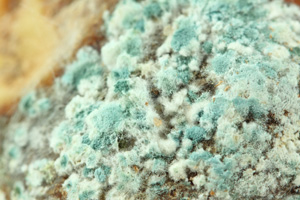
by Eric Brown | Aug 11, 2015 | Health, Mold Facts, Mold Information
Top 7 Areas Where Mold Is Growing In Your Home!

Top 7 Areas Where Mold Is Growing In Your Home!
Mold needs three key ingredients to grow:
- A food source which includes high cellulose content materials such as paper and wood. Other sources of food include drywall, wallpaper, carpet, ceiling tiles, dust, and dirt.
- The ideal temperature of 5 degrees to 38 degrees which provides ideal growing conditions for mold.
- Most importantly, water and moisture is the essential ingredient required by mold to grow which can be provided by leaking pipes, roofs and ceiling, sewer backups, floods, and condensation
The core problem with mold is that it will keep growing until it is removed. This is a concern because, on average, we spend 90% of our time indoors which can cause health issues for many plus structural issues for the property if the mold is not contained and removed.
The purpose of this article is to provide you with information to help you determine if you have a mold problem and explain what you should and should not do if you do find mold.
Where Should I Look For Mold?
One of the first signs that you have a mold problem will be a “musty” or “mildewy” odor. The next step is to determine where the smell is coming from. The seven areas listed below are some of the most common areas in a home where you will find mold. Other visual clues to look for during your investigation of these areas include: buckled floorboards, discolored carpet, new water stains on the ceiling or wall, and/or actual visual growth such as black specs.
Mold Area 1: Bathrooms and Kitchens
The most common area where you will find mold is under the sinks because of leaks.
Mold Area 2: Appliances
Another potential source of leaks are your refrigerator, dishwasher, and washing machines. Check behind and under the appliances for mold.
Mold Area 3: Roof
If you notice water stains on the ceilings, then your roof could be leaking which will cause mold if the leak is not repaired.
Mold Area 4: Windows
If you have condensation in the home, you will likely find mold on the window sills and around the windows.
Mold Area 5: Basement
If there is high humidity in your home, then check your basement and other areas of the home for mold.
Mold Area 6: Closets
Leaky pipes, high humidity, and other sources of moisture can result in hidden mold in your closets. If there are boxes in the closet, move them and check the walls and floor for mold.
Mold Area 7: Crawl Spaces
Moisture in your crawl space will cause mold to grow.
I Got Mold! What Should I Do?
Two key facts to take into consideration if you think you have mold.
Mold Fact 1: Mold Spreads By Releasing Spores
If you find mold, DO NOT disturb the material. Even if you have an isolated area of mold growth, disturbing the area could potentially worsen the mold problem because the spores will become airborne and seek out other areas in the home to grow. In short, your primary objective is to contain the area where mold is growing and prevent it from spreading.
Mold Fact 2: Some Molds Are Toxic
Another key concern is determining what type of mold is growing. Some molds, like Aspergillus and Stachybotrys, are toxic and can cause many health issues. Molds also produce myctoxins which studies have shown can depress the immune system, leading to many illnesses.
What You Should Not Do If You Got Mold!
We do not recommend removing mold without first consulting a trained professional. If you think you have mold, here are 5 things you SHOULD NOT DO if you have a mold problem:
1. DO NOT Clean Mold With a Normal Vacuum!
Mold spores are extremely small and pass through a normal vacuum filter. Vacuuming, will simply spread the spores! Mold remediation professionals use HEPA vacuums because the filters trap the mold spores preventing cross contamination.
2. DO NOT Remove Mold Contaminated Materials Without Proper Containment!
If you’ve ever wondered how mold can spread throughout your house, then here’s some information for you! Mold remediation professionals will set up containment barriers to prevent mold from spreading.
3. DO NOT Clean Mold With Bleach!
Bleach is great for cleaning bacteria and viruses, but does not work on mold and may in fact make the situation worse because the simple act of applying bleach creates moisture which mold needs to thrive and grow.
4. DO NOT Remove Mold Contaminated Materials Without Wearing Personal Protective Equipment!
Some molds can be toxic. This is the reason that mold remediation professionals wear safety equipment to prevent mold spores from entering the lungs and touching the skin.
5. DO NOT Ignore or Neglect Your Mold Issue!
In addition to the health issues that mold growth may cause, keep in mind that mold is like a parasite that will keep feeding. The key to stopping mold growth is to address and fix the causes of moisture and then remove the mold so that it will not continue to spread and feed on the home, thereby impacting the structural integrity and long term value of the property.
What You Should Do If You Got Mold!
If you discover mold in your home or business, just remember that some molds can be toxic and that it is best not to disturb the mold which could inadvertently release spores in the air and create even more problems.
Before you tackle the mold problem, contact us for a second opinion and piece of mind.
Mold B Gone has been serving the residents of Georgia since 2009 and we have the training and experience to effectively advise you of the best course of action for effective mold remediation in Atlanta and ensure that it is done properly. Most importantly, we offer a guarantee on our services to provide you with further peace of mind! 🙂
Our next article will explain – 4 Key Mold Inspection Actions!
Questions? We are here to help. Call 678-697-6267 or contact us via e-mail.







